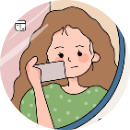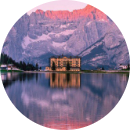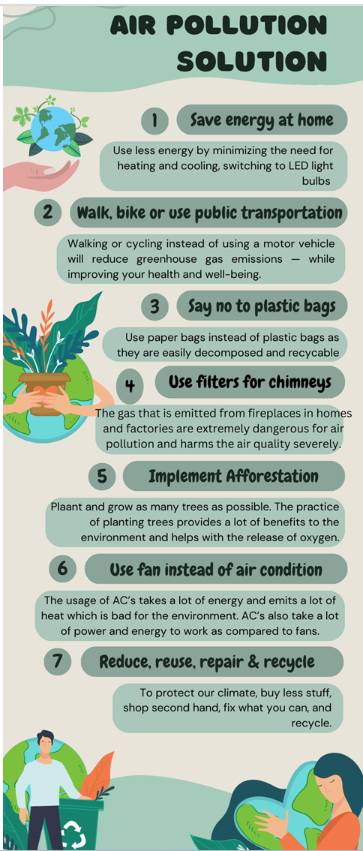In you opinions what are the causes of air pollution nowaday ? could you suggest some solutions reduce air pollution

Những câu hỏi liên quan
1, make a speech for the classmates about the ways to save energy at home
2 what are the causes of air pollution?could you suggest some solutions to reduce the air pollution
3 .name some natural disasters and talk about the ways to prepare for them.
1.
Hello everyone, today I'd like to tell you some information about types and sources of energy. Energy is classified into two main groups: renewable and non-renewable.The energy generated from natural sources such as the sun, wind, rain, and tides is called renewable energy. They are plentiful and can be generated again and again. They also have low carbon emissions so they are considered green and environment-friendly. Moreover, using renewable energy can reduce your electricity bills. Unfortunately, solar energy can be only used during the daytime but not during night or the rainy season. Geothermal energy also can bring toxic chemicals beneath the earth's surface to the top and can create environmental changes.
Non-renewable energy is the energy taken from other sources that are available on earth.They are limited and will run out in the future. They can't be re-generated in a short time.Fossil fuels - natural gas, oil and coal - are examples of them. They are cheap and easy to use. However, when burnt, they release toxic gases in the air so they cause serious environmental changes such as global warming. And the important thing is that non-renewable sources will expire someday. 2. 1. Use public mode of transportation
Encourage people to use more and more public modes of transportation to reduce pollution. Also, try to make use of carpooling. If you and your colleagues come from the same locality and have same timings you can explore this option to save energy and money.
2. Conserve energySwitch off fans and lights when you are going out. A large number of fossil fuels are burnt to produce electricity. You can save the environment from degradation by reducing the number of fossil fuels to be burned.
3. Understand the concept of Reduce, Reuse and RecycleDo not throw away items that are of no use to you. In-fact reuse them for some other purpose. For e.g. you can use old jars to store cereals or pulses.
4. Emphasis on clean energy resourcesClean energy technologies like solar, wind and geothermal are on high these days. Governments of various countries have been providing grants to consumers who are interested in installing solar panels for their home. This will go a long way to curb air pollution.
5. Use energy efficient devicesCFL lights consume less electricity as against their counterparts. They live longer, consume less electricity, lower electricity bills and also help you to reduce pollution by consuming less energy.
Several attempts are being made worldwide on a personal, industrial and governmental levels to curb the intensity at which air pollution is rising and regain a balance as far as the proportions of the foundation gases are concerned. This is a direct attempt at slacking Global warming. We are seeing a series of innovations and experiments aimed at alternate and unconventional options to reduce pollutants. Air pollution is one of the larger mirrors of man’s follies, and a challenge we need to overcome to see a tomorrow.
3.TYPE OF NATURAL DISATER: Flood
WAYS TO PREPARE:
• – Check for local flood warnings if your area is at risk: look online or call Floodline.
• – Tune in to the local radio or television news for updates. Alert your neighbours, particularly elderly or vulnerable people.
• – Prepare an emergency kit, including emergency numbers, insurance policy, first aid kit, torch and water.
• – Use our home emergency contacts sheet so you have the numbers you need to hand, even if you lose power.
• – Have a list of irreplaceable items to keep safe and put important personal documents into a sealed bag.
• – Pack essential items you will need if evacuated – medication, clothing, toiletries and items for children.
• – Purchase unfilled sandbags and sand from builders’ merchants. Remember that, if there is a flood, demand may exceed supply – as people will rush to buy them.
• – Empty freezers and refrigerators, leaving doors open.
• – If you can, move any vehicles to higher levels.
• – If you have time, take photographs before you leave. This may help later with insurance claims.
• – Turn off the mains power and water, and take mobile phones and chargers with you. Put sandbags in toilet bowls to prevent sewage back-flow.
• – Shut windows, lock doors – and don’t forget to take your pets.
Đúng 0
Bình luận (0)
Describe the environmental pollution in your city
Suggested question:
1. What are some of the causes of water/air pollution?
2. What can you do to keep water?air clean?
3. What can you do to reduce the pollution in your city?
4. What will you do to keep the schoolyard clean?
Help me! Help me! Thx so much!!<3
Most of the air pollution results from the burning of fossil fuels, motor vehicles, factories, aircraft and rockets. This can cause acid rain which damages water, soil, and vegetation. Air pollution also contributes to the greenhouse effect which can lead to a series of environmental problems such as global warming, polar ice melting, rise of sea levels and loss of land.
Water pollution is a result of dumping pollutants such as detergents, pesticides, oil, and other chemicals in rivers, which makes the water unclean or contaminated. Rubbish blockages in rivers can also cause pollution.
Đúng 0
Bình luận (0)
Describe the environmental pollution in your city
Suggested question:
1. What are some of the causes of water/air pollution?
2. What can you do to keep water?air clean?
3. What can you do to reduce the pollution in your city?
4. What will you do to keep the schoolyard clean?
Help me! Help me! Thx so much!!<3
Soil pollution is a consequence of human activities that alter ecological factors that cross the ecological boundaries of the communities living in the soil.
The land environment is home to human beings and most of the shallow creatures, the foundations for civil, industrial and cultural constructions. Land is a precious resource, people use land resources for agricultural production to ensure food supply for people. But with the pace of population growth and the pace of industrial development and urbanization, the area of arable land is shrinking and land quality deteriorates, the average land area head drops. Parularly in Vietnam, the actual depletion of land resources is very worrying and serious.
What do we need to do to protect the environment? That is the question that every one of us needs to answer. In my opinion, protecting the environment is the responsibility of the whole community. Everyone must have a sense of protection.
The green, clean, beautiful environment will make our lives better. From the house to the alley, from the alley to the school etc. The place is also clean and airy, many trees, air will be fresh, health will be guaranteed. That everyone wants. At present, I see my class, our school where the concentration of people, not very clean, garbage also lunged, trees are still less. On the street, there are public trash but few people put garbage in the bin, you do not throw it, making the street scene is not beautiful. To protect the environment, I feel we must always have a sense of environmental protection in parular: Do not throw garbage indiscriminately, do not discharge dirty water into ponds, do house cleaning, alleys, schools, not breaking flowers ... and propaganda for people always have common sense and responsibility for environmental protection.
Đúng 0
Bình luận (0)
1.do you think that pollution is a serious problem nowadays? why(whynot)?
2. what types of pollutions does your neighborhood face?
3. what are the major causes of air pollution?
4. can you name some effects of water pollution?
5. what can you do to prevent noise pollution?
6.could you name some english-speaking countries?
1. I think pollution is a serious problem nowadays. Because it causes the air quality to decrease, the water environment is altered, aquatic species do not have a safe habitat leading to mass death, the land becomes barren, the plants are not viable and cannot be used for agricultural activities.
2. My neighborhood has to face with air pollution, water pollution, soil pollution.
3. Air pollution is caused by waste from industrial zones, urban areas, air from factory operations in industrial zones, fertilizers used in agriculture, wastewater, aquaculture waste sludge, seafood processing, smoke in means of transport,...
4. Effects of water pollution: People suffer many diseases due to the use of dirty water in their daily activities, causing great losses for production and business industries, aquaculture households, ...
5. Prevent noise pollution: close windows, wear headphones, improve sound insulation of walls, plant trees.
6. English-speaking countries: United States, Great Britain, Canada, Australia, South Africa, Ireland, New Zealand.
Study well :))
Đúng 2
Bình luận (0)
1. What are the causes of air pollution? 2. What are the causes of water pollution? 3. What are the causes of land pollution? 4. What are the effects of air pollution?5. What are the effects of water pollution? 6. What are the effects of land pollution? 7. What should we do to reduce air pollution? 8. What should we do to reduce water pollution? 9. What should we do to reduce land pollution? giúp em với em đang cần gấp
Đọc tiếp
1. What are the causes of air pollution?
2. What are the causes of water pollution?
3. What are the causes of land pollution?
4. What are the effects of air pollution?
5. What are the effects of water pollution?
6. What are the effects of land pollution?
7. What should we do to reduce air pollution?
8. What should we do to reduce water pollution?
9. What should we do to reduce land pollution?
giúp em với em đang cần gấp
Work in groups.
1. Choose a serious pollution problem in your area (noise pollution, air pollution, water pollution, ...). Suggest solutions to the problem.
2. Make a poster. Write your solutions on your poster. Use picture or illustrate / decorate your poster.
3. Present your poster to the class.

Exercise 1:
Air pollution is measured by a number called the Air Quality Index (AQI), which ranges from 0-500, with anything over 150 considered “unhealthy.” The World Health Organization considers any reading above 100 to be hazardous and recommends that people avoid prolonged exposure. While Vietnamese cities such as Hanoi and Ho Chi Minh City have AHI readings around 100 or higher, many provinces have far worse levels of pollution. In some areas of the south, where there are large rubber plantations and coal mines, AQI numbers can surpass 500.
(Ô nhiễm không khí được đo bởi một con số gọi là Chỉ số Chất lượng Không khí (AQI), có khoảng từ 0 đến 500, với bất cứ cái gì ở trên mức 150 sẽ được coi là “độc hại”. Tổ chức Y tế thế giới WHO cho rằng với mỗi lần đọc mà chỉ số trên 100 thì nghĩa là ở mức nguy hiểm và khuyến cáo mọi người tránh tiếp xúc lâu ở bên ngoài. Trong khi những thành phố ở Việt Nam như Hà Nội và thành phố Hồ Chí Minh đọc được chỉ số AHI khoảng 100 hoặc hơn, nhiều tính khác có mức độ ô nhiễm tệ hơn rất nhiều. Ở một vài vùng ở miền Nam, những vùng trồng cao su và mỏ than thì chỉ số AQI có thể vượt qua 500.)
Some simple way to reduce air pollution
(Vài cách đơn giản để giảm thiểu ô nhiễm không khí)
1. Using public transports
(Sử dụng phương tiện công cộng)
2. Turn off the lights when not in use
(Tắt điện khi không sử dụng)
3. Recycle and reuse
(Tái sử dụng và tái chế)
4. Say no to plastic bags
(Nói không với túi nhựa)
5. Reduction of forest fires and smoking
(Giảm thiểu cháy rừng và hút thuốc)
6. Use of fans instead of air conditioner
(Sử dụng quạt thay vì điều hòa)
7. Use filters for chimneys
(Sử dụng tấm lọc cho ống khói)
8. Avoid usage of crackers
(Tránh sử dụng pháo ống)
9. Avoid using of products with chemicals
(Tránh sử dụng các sản phẩm chứa nhiều chất hóa học)
10. Implement afforestation
(Tiến hành trồng rừng)
Đúng 0
Bình luận (0)
Exercise 3:
As we can know, air pollution is measured by a number called the Air Quality Index (AQI), which ranges from 0-500, with anything over 150 considered “unhealthy.” The World Health Organization considers any reading above 100 to be hazardous and recommends that people avoid prolonged exposure. While Vietnamese cities such as Hanoi and Ho Chi Minh City have AHI readings around 100 or higher, many provinces have far worse levels of pollution. In some areas of the south, where there are large rubber plantations and coal mines, AQI numbers can surpass 500. So, what can we do to improve our air quality? Here are some simple way to reduce air pollution.
The first one is saving energy at home. You can save energy by reducing the need for heating and cooling in your house and replace normal light bulb to energy saving fluorescent lights to help the environment.
The second one is using public transport or walking or riding bike whenever you can. Doing that will not only reduce the carbon emission but also help saving money. Also, walking or riding bike is good for your health.
Next is saying no to plastic bags. The use of plastic products could be very harmful to the environment as they take a very long time to decompose, due to their material made up of oil. The use of paper bags instead is a better alternative as they decompose easily and are recyclable.
Implementing afforestation is also a way to lessen air pollution. There are a lot of volunteer group plating forests every year but we can practice it at our home by plant a tree or make a garden in the yard. Trees helps release oxygen and make the atmosphere cooler.
The next one is use fan instead of air conditioner. The usage of AC’s takes a lot of energy and emits a lot of heat which is bad for the environment. AC’s also take a lot of power and energy to work as compared to fans.
Finally, we reduce, reuse, repair and recycle. We should buy less stuff and buy second hand, fix what you can and recycle. This helps save a lot of money and protect the environment.
Tạm dịch:
Như chúng ta đã biết, ô nhiễm không khí được đo bởi một con số gọi là Chỉ số Chất lượng Không khí (AQI), có khoảng từ 0 đến 500, với bất cứ cái gì ở trên mức 150 sẽ được coi là “độc hại”. Tổ chức Y tế thế giới WHO cho rằng với mỗi lần đọc mà chỉ số trên 100 thì nghĩa là ở mức nguy hiểm và khuyến cáo mọi người tránh tiếp xúc lâu ở bên ngoài.
Trong khi những thành phố ở Việt Nam như Hà Nội và thành phố Hồ Chí Minh đọc được chỉ số AHI khoảng 100 hoặc hơn, nhiều tính khác có mức độ ô nhiễm tệ hơn rất nhiều. Ở một vài vùng ở miền Nam, những vùng trồng cao su và mỏ than thì chỉ số AQI có thể vượt qua 500. Đây là vài cách đơn giản để giảm thiểu ô nhiễm không khí.
Đầu tiên là tiết kiệm điện ở nhà. Bạn có thể tiết kiệm năng lượng bằng cách giảm nhu cầu sưởi ấm và làm mát trong nhà và thay bóng đèn thường thành đèn huỳnh quang tiết kiệm năng lượng để bảo vệ môi trường. Thứ hai là đi phương tiện công cộng hoặc đi bộ hay đạp xe bất cứ khi nào có thể. Thực hiện việc đó có thể làm giảm khí thải cacbon mà còn tiết kiệm tiền. Đi bộ và đạp xe cũng giúp cải thiện sức khỏe. Thứ ba là nói không với túi ni-lông. Việc sử dụng túi ni lông rất có hại cho môi trường vì chúng rất khó phân hủy, do nhựa được làm từ dầu mỏ. Sử dụng túi giấy là một biện pháp thay thế tốt vì dễ phân hủy và có thể tái chế. Trồng rừng cũng là một cách để giảm ô nhiễm không khí. Hằng năm có rất nhiều nhóm tình nguyên tham gia trồng rừng nhưng chúng ta có thể thực hiện ở nhà bằng cách trồng cây hoặc làm một khu vườn. Cây cối giúp tạo ra oxi và giúp bầu không khí trở nên mát mẻ hơn. Tiếp theo là sử dụng quạt thay vì dùng điều hòa. Sử dụng điều hòa tốn nhiều năng lượng hơn và tỏa ra nhiều nhiệt, điều này có hại cho môi trường. So với quạt thì điều hòa cần rất nhiều năng lượng để hoạt động. Cuối cùng là giảm thiểu, tái sử dụng, sửa chữa và tái chế. Chúng ta nên mua ít đồ hơn, mua đồ xách tay, sửa chữa những gì có thể và tái chế. Điều này giúp tiết kiệm tiền và bảo vệ môi trường.
Đúng 0
Bình luận (0)
Làm topic Tiếng Anh hộ ^^
Unit 7: POLLUTIONS
- What are the cause and effects of air pollution? What are the solutions to this problem?
- What are the cause and effects of water pollution? What are the solutions to this problem?
- What are the cause and effects of noise pollutions? What are the solutions to this problem?
- If you were the president, what would you do to help the environment?
Làm topic Tiếng Anh
1) Talk about causes and effects of a certain type of ppllution as well as solutions to this problem. ( Ô nhiễm nước, ô nhiễm đất, ô nhiễm không khí, ô nhiễm tiếng ồn, mỗi thứ 1 cái :V )
2) Talk about natural diasters and ways to prepare for them.
3) Talk about ways of communication now and in the future
4) Talk about the inventions
5) Talk about the roles of science and technology
Trả lời câu hỏi :V
1)When does air pollution occur??
2)What should people do to reduce...
Đọc tiếp
Làm topic Tiếng Anh
1) Talk about causes and effects of a certain type of ppllution as well as solutions to this problem. ( Ô nhiễm nước, ô nhiễm đất, ô nhiễm không khí, ô nhiễm tiếng ồn, mỗi thứ 1 cái :V )
2) Talk about natural diasters and ways to prepare for them.
3) Talk about ways of communication now and in the future
4) Talk about the inventions
5) Talk about the roles of science and technology
Trả lời câu hỏi :V
1)When does air pollution occur??
2)What should people do to reduce air pollution?
3)What is water pollution?
4)What should people do to reduce water pollution?
5)What have caused air pollution/ water pollution?
6)What effects can water pollution/ air pollution have?
7)List eight types of pollution you have learnt
8)Are there more natural disasters now than there were in the past? Why (not) ?
9)What should we do to prepare a typhoon/ floods/ drought?
10)What should we do to minimize/ deal with forest fires?
11)What do we need to know in case of evacuation?
12)Have you ever used social media to communicate with other people? What for? What 13)are the good things and bads thing when you use social media?
14)What does communication breakdown mean?
15)Three reason for communication breakdown.
16)What can you do to help avoid language barrier in communication?
17)What is its importance in our life?
18)What negative effects will robots have in the future?
Topic 1: Write about types of pollution.
P/s : Chi 1 cai o nhiem thoi ...
Nowadays there are a lot of types of pollution such as : air pollution, water pollution, visual pollution .... and noise pollution. Noise pollution is constant and loud sound. To measure the loudness, or volumn of sounds , people use a unit called a decibel. When a sound is louder than 70 decibels, it can cause noise pollution. Do you know that the noise from a vacuum cleaner or motorcycle can result in permanent hearing loss after eight hours ? The sounds of a concert are even more serious. Noise pollution can also lead to headaches and high blood pressure. If you are listening to music throughout headphones, and other people can hear it, it means the music is too loud and unsafe.
=> Bai nay co tao rut tu trg bai skills , co them y, cai nay thieu giai phap, tu xu.
Topic 2 : Talk about natural diasters and ways to prepare for them.
Today, there are more and more natural disasters that most people affect. In my opinion, we can't prevent natural disaster but we can have some preparation for them. There are many types of natural disasters but typhoon is a popular in our country. Firstly, typhoon is a tropical storm with wind and heavy rain. When it strike, it can weak havoc across large areas and effect lot of life or extensive damage to property . Flood can be happened by long heavy rain and people also can be became homeless. Last year lots of people were seriously injure in a typhoon. Natural disasters are also very dangerous but we also have some simple preparation . The first step is learnt about the risk in your area and read the information about natural disasters on gorvernment site. Next, find out that the rescue and emergency workers advice. It 's also important that you put together emergency supply it and should include food, water, medicine, document, and some money. Finally , plan safe places to meet your family and get to know the evacuation routes and shelter. In short, everyone sholuld protect environment to reduce this natural disasters.
3) Talk about ways of communication now and in the future.
Communication is a neccesary for eberyone. In present , there are three basic forms of communication: verbal, non-verbal and multimedia.
First, verbal ( meeting F2F) is a important way of communication help you success. I like hanging out with my friends and my friends and when I meet F2F with them I feel very confident. It explains why I can speak English easily. Let ' s try! You will have a great time. Secondly, you have a different thing to say non- verbal ( using signs ) will be a good choice. For example, you make your mother sad , you can use a sign to say ' sorry ' to her. Thirdly, with develop of science and technology , many multimedia appear such as video chatting , emailing,... You can know more information despite you still stay at home. But in the future, we can use telepathy or holography. Telepathy uses a tiny device place into our head. We will be communicating just by thought over the network. Holography will help us in our work. Even though, I prefer to chat with my friends. Life is more meaningful that way !
Khủng bố , :(((
Đúng 1
Bình luận (1)
Bài 4,5 mk gửi cho bn rồi đó !!!
1.Pollution enters the Earth's atmosphere in many different ways. Most air pollution is created by people, taking the form of emissions from factories, cars, planes, or aerosol cans. Second-hand cigarette smoke is also considered air pollution. These man-made sources of pollution are called anthropogenic sources.
Some types of air pollution, such as smoke from wildfires or ash from volcanoes, occur naturally. These are called natural sources.
2.Every time we drive to school, use our heater or air conditioner, clean our windows, or even style our hair, we make choices that affect air pollution. These steps, as well as many others, are things we all can do to help reduce air pollution.
Conserve energy – remember to turn off lights, computers, and electric appliances when not in use. Use energy efficient light bulbs and appliances. Participate in your local utility’s energy conservation programs. Limit driving by carpooling, using public transportation, biking and walking. Combine errands for fewer trips. Keep your automobile well tuned and maintained. Follow the manufacturer’s instructions on routine maintenance, such as changing the oil and filters, and checking tire pressure and wheel alignment. Avoid excessive idling of your automobile.3.
Water pollution is the contamination of water bodies (e.g. lakes, rivers, oceans, aquifers and groundwater). This form of environmental degradation occurs when pollutants are directly or indirectly discharged into water bodies without adequate treatment to remove harmful compounds.
Water pollution affects the entire biosphere – plants and organisms living in these bodies of water. In almost all cases the effect is damaging not only to individual species and population, but also to the natural biological communities.
4.
If you want to help keep our waters clean, there are many things you can do to help. You can prevent water pollution of nearby rivers and lakes as well as groundwater and drinking water by following some simple guidelines in your everyday life.
Conserve water by turning off the tap when running water is not necessary. This helps prevent water shortages and reduces the amount of contaminated water that needs treatment. Be careful about what you throw down your sink or toilet. Don’t throw paints, oils or other forms of litter down the drain. Use environmentally household products, such as washing powder, household cleaning agents and toiletries. Take great care not to overuse pesticides and fertilisers. This will prevent runoffs of the material into nearby water sources. By having more plants in your garden you are preventing fertiliser, pesticides and contaminated water from running off into nearby water sources. Don’t throw litter into rivers, lakes or oceans. Help clean up any litter you see on beaches or in rivers and lakes, make sure it is safe to collect the litter and put it in a nearby dustbin.5.
1. Industrial waste: Industries produce huge amount of waste which contains toxic chemicals and pollutants which can cause air pollution and damage to us and our environment. They contain pollutants such as lead, mercury, sulphur, asbestos, nitrates and many other harmful chemicals. Many industries do not have proper waste management system and drain the waste in the fresh water which goes into rivers, canals and later in to sea.
2. Sewage and waste water: The sewage and waste water that is produced by each household is chemically treated and released in to sea with fresh water. The sewage water carries harmful bacteria and chemicals that can cause serious health problems. Pathogens are known as a common water pollutant; The sewers of cities house several pathogens and thereby diseases.
3. Mining activities: Mining is the process of crushing the rock and extracting coal and other minerals from underground. These elements when extracted in the raw form contains harmful chemicals and can increase the amount of toxic elements when mixed up with water which may result in health problems.
4. Marine dumping: The garbage produce by each household in the form of paper, aluminum, rubber, glass, plastic, food if collected and deposited into the sea in some countries. These items take from 2 weeks to 200 years to decompose.
5. Accidental Oil leakage: Oil spill pose a huge concern as large amount of oil enters into the sea and does not dissolve with water; there by opens problem for local marine wildlife such as fish, birds and sea otters.
6. Burning of fossil fuels: Fossil fuels like coal and oil when burnt produce substantial amount of ash in the atmosphere. The particles which contain toxic chemicals when mixed with water vapor result in acid rain. Also, carbon dioxide is released from burning of fossil fuels which result in global warming.
7. Chemical fertilizers and pesticides: Chemical fertilizers and pesticides are used by farmers to protect crops from insects and bacterias. They are useful for the plants growth. However, when these chemicals are mixed up with water produce harmful for plants and animals.....
6.
Death of aquatic (water) animals
The main problem caused by water pollution is that it kills organisms that depend on these water bodies. Dead fish, crabs, birds and sea gulls, dolphins, and many other animals often wind up on beaches, killed by pollutants in their habitat (living environment).
![]() Disruption of food-chains
Disruption of food-chains
Pollution disrupts the natural food chain as well. Pollutants such as lead and cadmium are eaten by tiny animals. Later, these animals are consumed by fish and shellfish, and the food chain continues to be disrupted at all higher levels.
Diseases
Eventually, humans are affected by this process as well. People can get diseases such as hepatitis by eating seafood that has been poisoned. In many poor nations, there is always outbreak of cholera and diseases as a result of poor drinking water treatment from contaminated waters.
Did you read about the Water contamination in Flint, Michigan, USA? Read here.
![]() Destruction of ecosystems
Destruction of ecosystems
Ecosystems (the interaction of living things in a place, depending on each other for life) can be severely changed or destroyed by water pollution. Many areas are now being affected by careless human pollution, and this pollution is coming back to hurt humans in many ways.
7.
Air pollution
Water pollution
Soil Pollution
Radioactive Pollution
Noise Pollution
Thermal Pollution
Light Pollution
Visual Pollution
Personal Pollution
8.
Are natural disasters increasing? Yes. Natural disasters are unpreventable occurrences that take place, ranging from mild to absolutely destructive. In recent years, it may seem as if these storms have increased from prior decades.
According to recent studies, it is true: the number of natural and geophysical disasters taking place each year is noticeably skyrocketing.
Geophysical disasters include earthquakes, volcanoes, dry rock-falls, landslides and avalanches. Climatic disasters are classified as floods, storms, tropical cyclones, local storms, heat/cold waves, droughts and wildfires.
9.When you buy a home, you want to protect it. Nothing should take away your sanctuary—not bad weather or unexplainable freak accidents.
10.Human-initiated fires are to blame for a high amount of property damage; loss of wildlife habitat and the lives of humans and animals. Some forest fires are the result of carelessness or improper habits when engaging in outdoor activities. Familiarizing yourself with appropriate forest fire preventive measures not only helps you become a more aware individual when it comes to protecting the safety and natural resources in your region, but also helps you better spread the word
Đúng 1
Bình luận (2)
Xem thêm câu trả lời
1. What are types of pollution? 2.Tell the causes and effects of one type of pollution in your area 3.What do you do to reduce pollution at your school
1 They are air pollution, water pollution, and land pollution.
2 - The causes of one type in my area is Factory emissions
- Affect: + Make acid rain
+ Affects Respiratory system of people
+ Air pollution
3 - Clean the school grounds and in the classroom
- plant a lot of trees
- dump garbage in the trash
Đúng 2
Bình luận (0)























